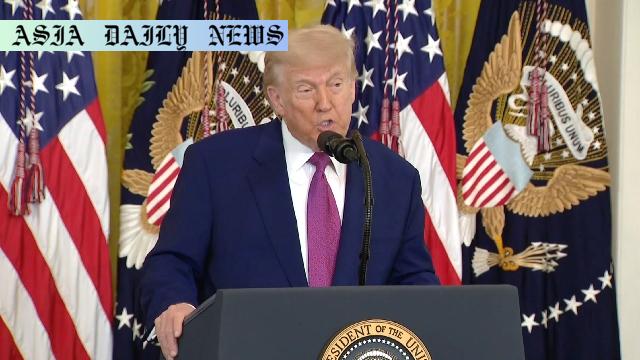Tariff discussions intensify as Trump hints at increasing existing 25% levy to boost domestic car manufacturing and jobs.

Introduction to the 25% Auto Tariff
The global automotive landscape is experiencing a significant shift as US President Donald Trump introduces ambitious tariff policies targeting foreign-made vehicles. Initially imposed in April, the 25% tariff on imported automobiles was designed to stimulate domestic manufacturing and safeguard American auto industry workers. Recognizing the apparent successes of this move, the President has revealed plans to possibly elevate the tariff further, a decision he believes will solidify economic growth and bolster employment in the United States.
Rationale Behind the Tariff
The imposition of the 25% tariff underscores the Trump administration’s commitment to promoting economic nationalism. The President aims to tackle perceived inequalities in trade and secure a competitive edge for domestic automobile manufacturers. Trump argues that higher tariffs increase the cost of importing vehicles, providing foreign companies with an incentive to establish production facilities in the US. This would not only contribute to job creation but also align with the administration’s strategy of reversing decades of deindustrialization in America’s heartland.
Japan’s Negotiation Efforts
One of the most active respondents to the auto tariff policy has been Japan. As one of the largest exporters of vehicles to the United States, the country stands to lose significantly if the tariff hike progresses. Japan’s Economic Revitalization Minister, Akazawa Ryosei, is spearheading efforts to renegotiate terms with the Trump administration. With a crucial bilateral meeting scheduled during the upcoming G7 Summit in Canada, Japan is leaning into diplomacy to avoid economic repercussions and maintain access to the lucrative US car market.
Analysis: Potential Impacts and Criticisms
While President Trump touts the 25% tariff as a victory for the American labor force, critics highlight its potential downsides. Opponents argue that such tariffs could escalate trade tensions, disrupt global supply chains, and inadvertently raise prices for American consumers. Additionally, automakers reliant on parts manufacturing abroad may struggle to adapt quickly, leading to transitional inefficiencies. The policy has even drawn skepticism among economists who warn of possible retaliation from nations like Japan, thus risking a tariff war.
Future Implications for the Global Automotive Industry
The implications of this policy stretch far beyond America’s borders. If the tariff is increased as suggested by President Trump, foreign automakers will need to reassess their business models and possibly redirect investments into the United States. Over time, this could result in a domino effect influencing trade dynamics across multiple industries. The automotive sector, a cornerstone of many economies, could serve as a test case for broader protectionist measures globally.
Conclusion
The move by the US to impose and potentially escalate a 25% tariff on imported vehicles signifies a pivotal moment in international trade relations. As President Trump pursues policies aimed at revitalizing domestic industries, countries like Japan face mounting pressure to adapt or negotiate. While the policy garners both applause and criticism, its long-term effects on global trade, the American workforce, and foreign economies remain to be seen. The G7 Summit may provide critical insights into how this high-stakes economic gamble unfolds.
Commentary
Analyzing President Trump’s Trade Strategy
The introduction of a 25% tariff on imported automobiles reflects a bold and aggressive stance by President Trump, one that underscores his administration’s broader agenda of prioritizing domestic production and employment. While some may criticize this strategy as protectionist and economically isolating, it is clear that the President is attempting to rewrite the rules of trade to favor American interests. By raising the cost of imports, Trump is sending a strong message to automakers worldwide: America is serious about reviving its manufacturing sector.
Challenges Faced by Foreign Automakers
For foreign automakers like those in Japan, this tariff introduces a complex set of challenges. Not only does it shake their financial models, but it also forces them to rethink logistics and investment strategies. While the option to build plants within the US may mitigate tariff expenses, it would also require substantial capital and long-term planning. Coupled with the uncertainties of fluctuating policy decisions, this tariff places these companies in a precarious position. It serves as a wake-up call that the global marketplace is increasingly fractured along nationalist lines.
The Balancing Act of Economic Nationalism
One cannot ignore the broader economic implications of such measures. While President Trump’s policies resonate with sections of American workers who feel left behind by globalization, they also pose risks of retaliation by other nations. This is especially concerning in a globally interconnected economy where one nation’s policy shift can trigger a domino effect of responses. If countries like Japan respond with reciprocal tariffs, the world could potentially see trade wars that harm all parties involved.
The Global Picture Moving Forward
Debates on the effectiveness of Trump’s tariff policies are unlikely to settle soon. However, the ongoing negotiations at the G7 Summit represent an opportunity for both sides to reach a mutually beneficial agreement. Ultimately, the success of this policy hinges on its ability to balance domestic economic recovery with maintaining healthy international trade relations. As conversations continue, the global community will be watching closely to understand how this chapter in trade policy history unfolds.


